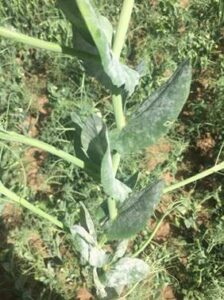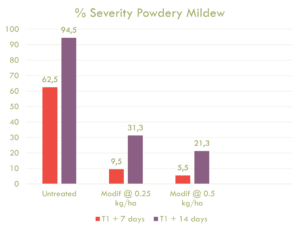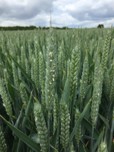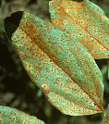Life in Life Scientific
June in Life Scientific Newsletter
UK News:
It’s been a while since we’ve all come together for a team day but UK, French, Spanish, German and Irish colleagues came together for a much needed catch up in May.
Along with sharing successes and discussions on the challenges facing the industry for next season we were able to share a bar-b-que and team games in the evening, such as “ski racing”, wellie wanging and turf laying.
Product News
Esker was launched last spring and is a combination of 160g/l prothioconazole and 80g/l tebuconazole. Esker is a reverse engineered Kestrel and a broad-spectrum systemic fungicide with eradicant and protectant activity. It is an emulsifiable concentrate formulation suitable for use alone or in combination with a wide range of other fungicides, herbicides and insecticides to provide effective control of key diseases and a reduction of the mycotoxin deoxynivalenol in wheat.
For more information including product label, safety data sheet and compatible tank mixes see the Life Scientific website
https://lifescientific.com/products/
or download the App to get product information direct to your phone.

New EAMU
We’re delighted to bring another use to our product Modif which contains cyprodinil and fludioxonil and thanks to its new extension of authorisation, can now be used on both carrots and celeriac.
Modif is a reverse engineered Switch, a WG which can be used for a range of diseases in ornamental plant production as well as fruit and vegetable crops.
The new EAMU provides protection against sclerotinia and Alternaria leaf blight and can be used as set out in the table below.


A copy of the documentation needed can be found on the Modif product information page on our website.
https://lifescientific.com/products/uk/modif/
There is no label claim for powdery mildew on the label, however at a customer request Modif was included in a replicated field trial conducted by RAA labs in Lincolnshire to determine the level of control of powdery mildew when used at two dose rates in crops of vining peas.
One application was made at early flowering using dose rates of 0.25kg/ha and 0.5kg/ha. Assessments were made at 7 and 14 days after application to show the percentage control over untreated.
In late spring, peas and beans are susceptible to powdery mildew, which shows as pale patches on the upper side of the leaf and the underside has grey or dark reddish mycelium.

T3 Applications
T3 applications are being planned for most cereal crops. Due to the warm, wet and recent humid conditions the risk of fusarium ear blight has increased. Many growers won’t want to take the risk of leaving crops completely unprotected from now until harvest. Brown rust is also a concern at this late stage and plants will need protection to prevent yield loss.
Oraso Pro and Esker fungicides containing tebuconazole and prothioconazole make ideal choices to protect against ear diseases, rust, give a top up on Septoria control and help to prevent loss of grain quality in milling wheats.
Ideal Timing
The timing of T3 applications will, of course depend on variety and end market considerations, however the main target of the fungicide application will also change the ideal spraying date.
If the target is controlling foliar diseases, an early T3, around GS 59 is considered optimum. This will also help to maximise the canopy size and the duration of yield building within the plant.
The ear is considered to be at the greatest risk of disease between GS 63 and 65, just after the start of flowering. Ears are infected via the anthers so it’s important not to spray before these are out. This can be a really short time period so regular crop monitoring and a variety prioritisation plan should be in place. Levels of disease control will decrease daily after flowering is completed, so at GS 65 crops will become a priority if weather has made application impossible up to that point.

Bean Agronomy
Many bean crops will have received their first fungicide application, but a follow up will be needed to ensure plants remain disease free for the remainder of the growing season. The recent warmer wet weather brings an increased risk of bean rust and chocolate spot.
Rust scores are not classified on the PGRO recommended list, however there are no varieties of winter or spring bean crops which are resistant to rust.
During the last couple of years bean rust has become the most dominant disease of the crop. Using an effective fungicide will protect yield losses which can be as high as 70%.
A mix of azoxystrobin and tebuconazole will control disease. Azoxystar contains 250g/l azoxystrobin and is permitted for two applications of 1.0 l/ha between GS 60 and 69. If Azoxystar has been used previously in the crop leave a 21 day interval between applications. Zonor which contains 250g/l tebuconazole can be used in mix with Azoxystar or separately from GS 40 up to 35 days before harvest to control chocolate spot and bean rust.



June in Life Scientific Newsletter

